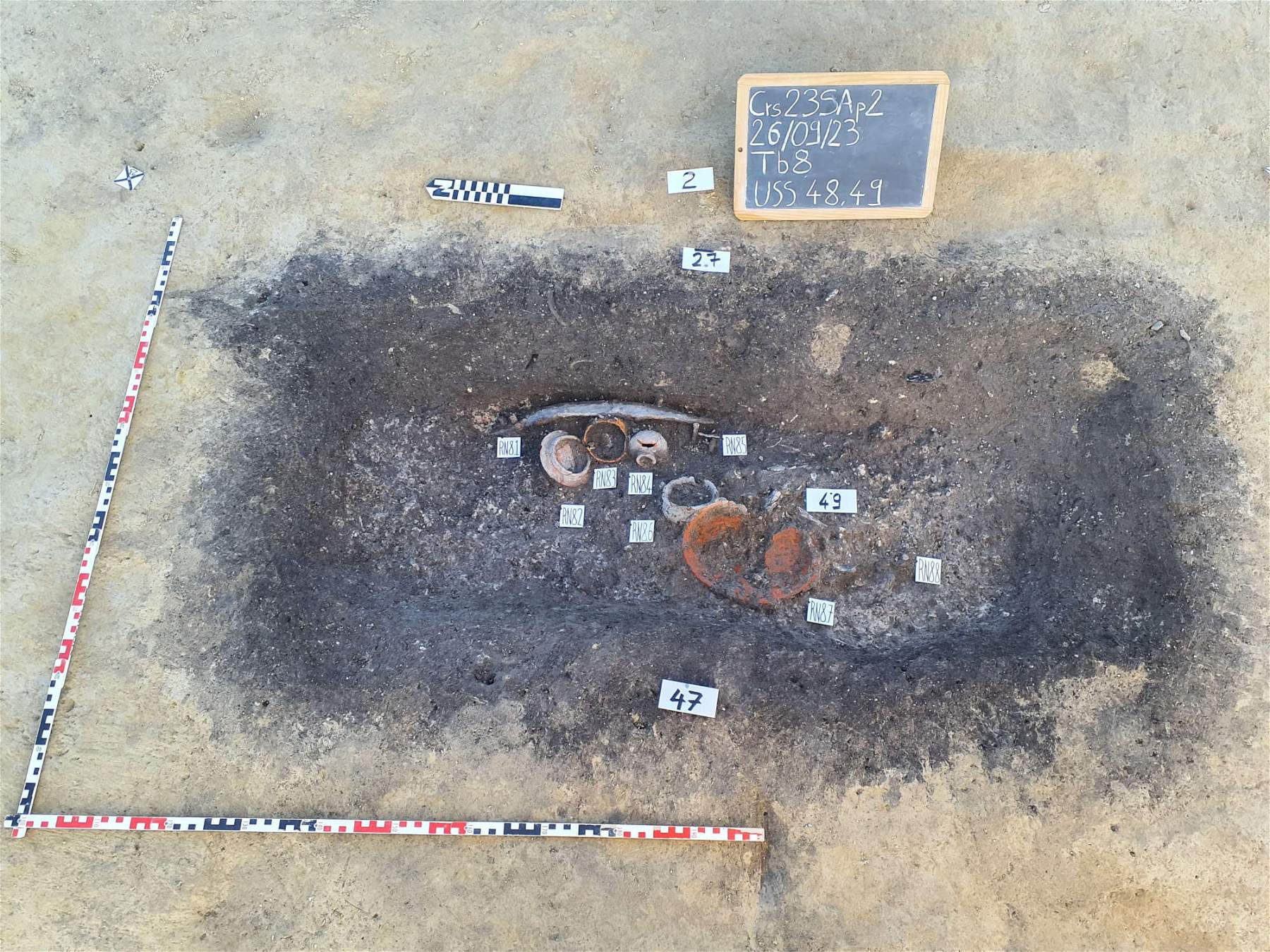Significant archaeological discovery in Casalromano (Mantua), where an excavation by the Soprintendenza Archeologia, Belle Arti e Paesaggio of Cremona, Mantua and Lodi led to the discovery of a late Iron Age necropolis (between the second half of the 2nd century BC and the beginning of the 1st century BC.), thanks to geophysical surveys conducted with magnetometer and georadar, led by archaeologist expert in digital field archaeology Guglielmo Strapazzon, thanks to collaboration with the Central Institute for Archaeology and special funds allocated by the General Directorate of Archaeology, Fine Arts and Landscape. The archaeologists became aware of the presence of a necropolis by studying the results of georadar, which identified a core of rectangular pits arranged in several rows, and those of the magnetometer, which allowed them to observe strong magnetic anomalies at some of the pits. Subsequent soundings led to the discovery of two incineration tombs (i.e., with the ashes of the deceased), with valuable grave goods.
These were a female and a male tomb: in the female one, ceramic pottery, an iron knife and jewelry such as fibulae (i.e., brooches) and a necklace made of glass and bronze vagus were found. The men’s one, on the other hand, returned the trousseau of a warrior, with a shield of which the umbo was preserved, a spear (lacking, however, the wooden shaft, which had deteriorated with time), a long sword with scabbard, a knife and a rich ceramic trousseau.
This initial discovery led the Superintendency to request additional funds from the Ministry of Culture to complete the excavation of the entire necropolis, which was entrusted to the company ArcSAT, with the aim of preserving the context from agricultural damage and possible clandestine excavation. The excavation was then reopened in September, and eleven more tombs were discovered, also incineration tombs(the ashes must have been contained in some wooden boxes, as some findings revealed), arranged in a north-south orientation like the first two. The grave goods that emerged confirmed the dating to the late Iron Age and allowed the burials to be identified as a necropolis of the Cenomani, a warrior people of Celtic culture, who from the end of the third century B.C. onward forged alliance relations with the Romans. The peaceful relations between this people and the Romans would have led the Cenomani to adopt several customs of the Romans, including the cremation of the dead, the use of laying coins in graves, and the adoption of imitation ceramic types. Typically Celtic, on the other hand, are some of the choices of the trousseau, which see the placement near the ashes of weapons, in the male tombs, and stained glass jewelry, such as necklace vains, bronze pendants and armillas (i.e., bracelets to be worn at the height of the biceps), which generally connote the female tombs. Interesting among the bronzes was the discovery of a wheel-shaped element surmounted by a small horse, which because of its great resemblance to the better-known one from the Etruscan site of Forcello di Bagnolo San Vito (Mantua) opens up several hypotheses that will be better investigated during the post-excavation study of the context.
In recent weeks of excavation, archaeologists have since discovered that two of the thirteen tombs that make up the necropolis were inhumation tombs, meaning the deceased were not cremated before being buried. These were two infants, including a little girl who wore a blue glass bracelet (armilla) on her left wrist, and a second, whose gender cannot be determined, who in one of the ceramic vessels kept some bone fragments, probable remains of a sacred meal.
Several small finds, including a bronze fibula, were also recovered from sifting activities involving volunteers from the Klousios Association - Centro Studi e Ricerche Basso Chiese, who assisted the archaeologists during the excavation activities.
The field investigations have come to an end, now the study phase begins. The rich grave goods found in the necropolis have been temporarily housed at the nearby Museo Civico “G. Bellini” of Asola, pending their restoration by the Superintendence. During the investigations, soil samples were also taken, on which analyses will be conducted for the reconstruction of the paleoenvironment. Further analyses will also be conducted on the bone remains of the two inhumation tombs, in search of answers about the life of the Cenomani of Casalromano.
 |
| Mantua, discovered rich necropolis of the Cenomani, ancient warrior people of Celtic culture |
Warning: the translation into English of the original Italian article was created using automatic tools. We undertake to review all articles, but we do not guarantee the total absence of inaccuracies in the translation due to the program. You can find the original by clicking on the ITA button. If you find any mistake,please contact us.